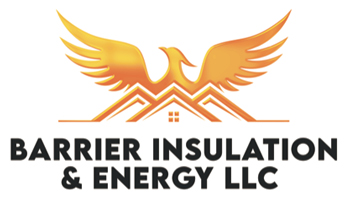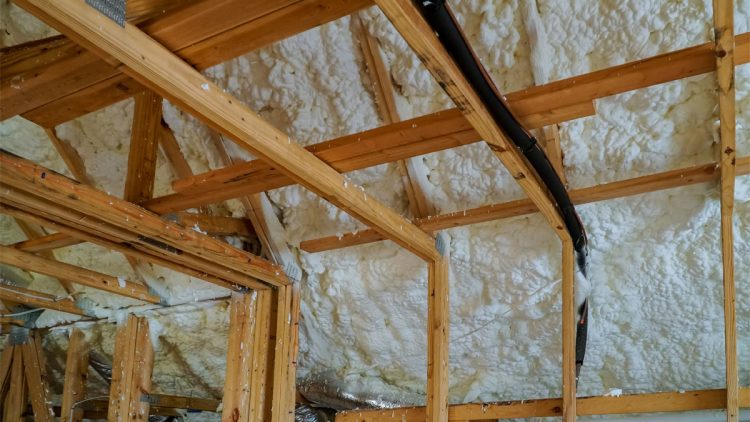Spray Foam Insulation Pros and Cons
Spray foam insulation is more costly than other types of insulation; fiberglass batts and/ or blown-in cellulose, for instance, and it requires installation by a professional. Why do a lot of home-builders and homeowners trust it so much? One word, performance.
Spray polyurethane foam has two types: open cell and closed cell. Each type fills gaps and crevices throughout walls and ceilings a lot more productively than batt insulation, easily pouring around pipes and wires to produce an efficient air barrier when it cures.
Spray foam is produced at the project site from 2 chemicals, the “A” side, and “B” side. They each mix at the nozzle of the spray gun, foaming up as the components are mixed together. The professional installers are fashioned in protective clothing and respirators as they spray it.
Open Cell Foaming is Vapor-Porous
Open cell foaming weighs less and is the less costly of the 2. Having R-values of around R 3.5 and R 3.6 each inch, open cell foam’s weight is around 1/2 lb. per cubic foot. Even though costs differ, anticipate on paying $1 up to $1.20 per square foot as they are spraying a 2×4 studded area. Professional installers usually overfill stud areas or rafter bays using the foam and trim the excess off after the foam is done curing. This will leave the cavity totally filled.
Open cell foam is a great air barrier, but it’s vapor- porous. Meaning water vapor can make its way throughout the foam even as a large movement of air is obstructed. This becomes an important point as the foam is sprayed among rafters on the underside of the roof sheathing to produce a conditioned attic in colder climates. During winter months, water droplets inside the attic air could make their way through the foam and gather on the other side of the sheathing—a possible mold and decay issue. In cases like this, a separate vapor inhibitor or vapor-hindering paint needs be covered over the foam.
Closed Cell Foam is a Vapor Blocker
Closed cell foaming has a greater R-value than open cell foaming — around R 6.5 per inch — and it’s a vapor blocker in addition to an air blocker. Some manufacturers even have higher R-values. Closed cell foam is a lot more dense, about 2 lb. per cubic foot, and is not affected by water. It creates tough, dense insulating layers and reinforces the structure of ceiling and wall cavities.
Closed cell foaming also is a lot more expensive than open cell foaming, with prices around $1.75 to $3 per square foot in a 2×4 pocket. That is money well spent in many situations. In walls or roofs where there is limited space for insulation, for instance, closed cell foam provides greater thermal performance in a lot more thin layer than a lot of other types of insulation.
Cured closed-cell foam is a lot more difficult to trim than open cell foaming, so the professional installers do not overfill the studded and rafted areas. It’s hard to work trimming it back after the foam has cured. Installers also need to be careful to not spray too much foam on a single pass, or lift. The reasoning for this is that the foam produces heat when it cures—an exothermically reaction. When the foam is too thick, it could catch on fire. Even though this is uncommon, it has occurred, and inadequately installed foam has been at fault for many house fires.
Saving Money
With its considerably high R-values, closed cell foaming would appear to be the perfect insulation for external walls. Theoretically, filling in a 2×6 studded area could yield an R-value of 37.75, close to double what a conventional density fiberglass batt could offer.
Firstly, the installer will most likely not bring the foam all the way to the outer edge of the studs. They’re more likely to leave a 1/2-inch buffer so they will not have to trim more back after the initial installation. After the installation, the insulation layer is in fact 5 inches, not 5-1/2 inches.
At that point, there is a framing factor— the area of the wall that is not insulation: wooden or metal studs, wall headers, and top and bottom plates. As the R-value of wood is added into the equation, the entire wall R-value is more around R 15.4. That’s just around R 1.9 more than you would get with open cell foaming, but more costly.
Considerations for the Environment
Although some indisputable performance benefits, many home-builders, and designers will not use spray foam. Proponents of foam-free construction do not like the petrochemical background of spray foam or the potential, however few and far between, that incorrectly mixed foam will produce chemical hazards or residual odors in the home.
And in cases of closed cell foaming, there’s the issue of the blowing medium—the chemical additive that makes the foam sudsy and gives it, its high R-values. Open cell foam utilizes water or CO2 as the blowing medium, but the standard industry blowing medium for closed cell foaming has been a hydrofluorocarbon with a global warming potential that is possibly 1,300 times more than CO2.
As the risk of global warming and climate change are becoming more understood, this by itself is enough to make many builders go in a different way. Nevertheless, next-generation blowing mediums created by Honeywell, known as Solstice, is a distinctive chemical, a hydrofluoroolefin (HFO). It has a global warming potential of one or less, making spray foam creations that utilize it no more harmful than that in regard to open cell foaming. The spray-foam industry is progressively moving toward to this newer blowing medium, and the SPFA anticipates the transition to be finished anywhere between the next year or two.
Source:
- “Spray-Foam Insulation.” Fine Homebuilding, 13 June 2019, www.finehomebuilding.com/2019/06/13/spray-foam-insulation.
Phoenix Spray Foam Insulation Contractors
If you have a home or commercial property in Phoenix that’s costing you an arm and a leg to cool or heat; Barrier Insulation is here to help! We offer the best spray foam insulation installation service in the state and provide it to all the cities in the Phoenix Valley. From Phoenix to Mesa and Gilbert to Glendale we have you covered with the very best insulation and professional installation.
Call Today For A Free Spray Foam Insulation Quote 602-499-2922

